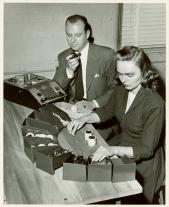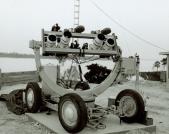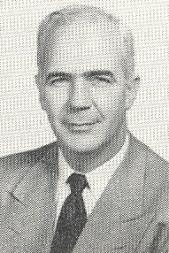The EES had secured a foothold in military electronics. But in the 1950s and through the 1960s, the EES was still evolving as a research organization. In an effort to consolidate its strengths and establish direction, it welcomed a large number of "over the transom" projects, characterized by their remarkable scope and variety.
Innovative solutions included:
- The U.S. Army’s first nomenclature millimeter wave radar.
- A machine that cut, sewed, and packaged baby diapers.
- A paint thickness gauge.
- A machine that removed meat from chicken necks.
- The first high-speed dental drill.
- A device for measuring the presence of staph germs in a hospital room.
- Emory University's first cobalt-radiation machine for lung cancer treatment.
- Automation of the string-winding stage of yo-yo manufacturing.
The broad range of research conducted during this period also covered:
- A long-term research investigation into the nature of oleoresins derived from pine trees to develop new and more profitable uses as a commercial product.
- The examination of particle size distribution as a factor influencing the viscosity of suspensions.
- Studies of the behavior of metals and alloys at temperatures within a few degrees of absolute zero to ascertain changes in mechanical properties, electrical and thermal conductivity, and thermal expansion.
- The graphical analysis of speech, or “acoustic phonetics," conducted to hopefully lead to better hearing aids, new instructional techniques for learning other languages, and even a "voice-operated typewriter."
- Early application of a nascent technology — television — involving the use of television systems to view instrument gauges and panels from a remote or central location in real time.
- The development of a small packet of moisture-absorbing charcoal and silica gel for inclusion in potato chip packages to keep chips crisp.
- The examination of 173 species of bamboo to gauge its potential as a cash crop in Georgia, with possible use as cattle fodder, a pulp source and lightweight construction material.
- The autographic time study machine to help manufacturers optimize the productivity of their manual assembly lines.
In addition, in preparation for manned space flight, EES played a prominent role in Project Firefly. Sponsored by the U.S. Air Force, the goal was to learn more about the upper atmosphere. Georgia Tech's involvement centered on optical measurements of the atmosphere between 50 and 80 miles above Earth.





